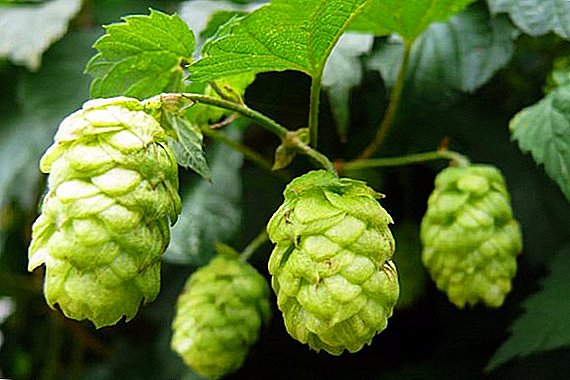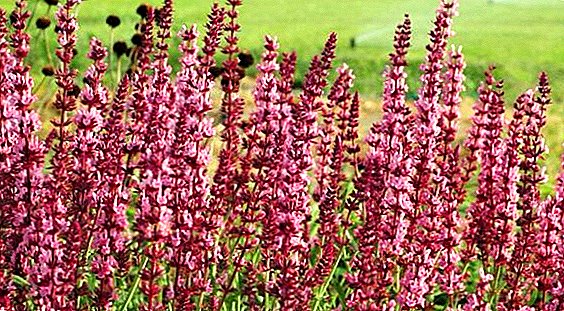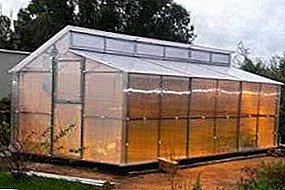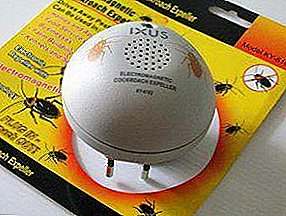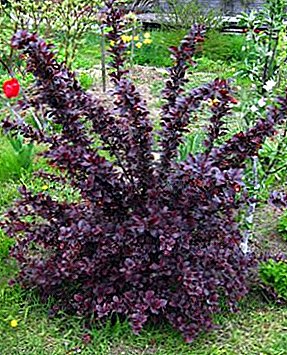 To create a unique type of site, many plants are used that are complex and not quite adapted to our climate. But there are many very beautiful and at the same time not capricious plants that can truly decorate any garden. One of these decorative finds is the barberry.
To create a unique type of site, many plants are used that are complex and not quite adapted to our climate. But there are many very beautiful and at the same time not capricious plants that can truly decorate any garden. One of these decorative finds is the barberry.
Description
Barberry of Ottawa Superba - a variety that has a premium from the English Horticultural Society.
We recommend that you read about how to grow a barberry in your area, what are the types and varieties of barberry and how this berry is useful.
The plant is a deciduous shrub of large size (in width and in height it can reach 3-4 m). The bush grows quickly and reaches its maximum size at the age of 8-10 years.
Initially, shoots grow vertically, but over time acquire an arched drooping character. The bark has a red-brown color, and its surface is covered with three-part spikes up to 2 cm long. 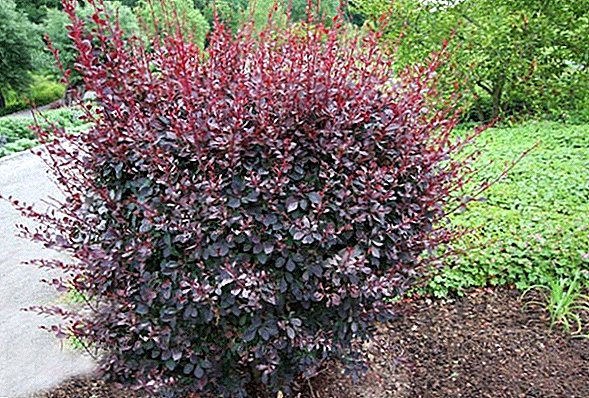 The leaves have an obovate or round shape and an average size of 3-5 cm in length. Brilliant, dark red or purple leaves look spectacular throughout the season, without losing color saturation, even if they grow in the shade. In the autumn the bush gets a pale red or orange shade.
The leaves have an obovate or round shape and an average size of 3-5 cm in length. Brilliant, dark red or purple leaves look spectacular throughout the season, without losing color saturation, even if they grow in the shade. In the autumn the bush gets a pale red or orange shade.
Flowering occurs in May. Yellow-red flowers are collected in racemes an average of 10 pieces. The aroma of the flowers is pleasant and unobtrusive.
Did you know? By the end of autumn, when the first frosts pass, the barberry fruits become less bitter and sour. Therefore, do not rush to their collection.
Fruits are formed scarlet color and oblong shape (length from 0.8 to 1 cm). Ripen in late September or early October. Brilliant, dense and sour, they retain their qualities well and hang on the branches for a long time. Are edible for humans. 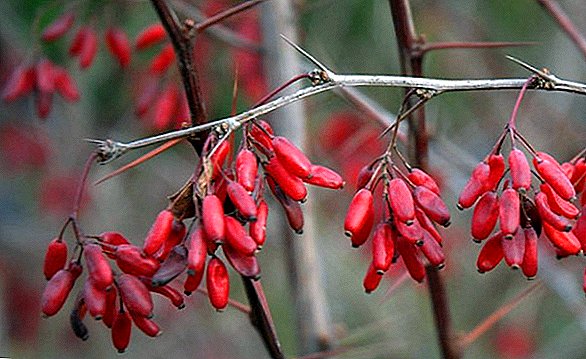 Barberry Superba
Barberry Superba
Landing
When planting barberry, you need to consider several factors and act consistently:
- landing preferably in spring or autumn. During spring planting, care must be taken that the buds on the seedling are not dissolved, and the soil has been heated to +15 ° C. If you plant a bush in the fall, then no later than 3-4 weeks before the first frost. Planting in the fall is considered more favorable;
- the place must be open or partially in the shade, warm and protected from strong gusts of wind;
- soil should be checked for acidity. If it is higher than pH 7, then it is worth producing;
Find out what is important soil acidity for plants, how to determine the acidity of the soil at the site, how to deoxidize the soil, as well as how to improve soil fertility.
- planting mixture is composed of turf land, peat, humus and wood ash. All fertilizers are mixed with soil and plentifully filled with water;
- the size of the landing pit for a medium-sized bush is 40x40 cm;
- if several bushes are planted, then the distance between them should be at least 1.5-2 m;
- root neck placed at ground level;
- the roots are covered with fertile soil (voids and unnatural bends should be avoided);
- if from the bushes in the future a hedge is assumed, then the plants should be located on the basis that 2 bushes are used per 1 running meter.
Video: landing barberry Superba
Important! Buy only healthy seedlings, without any defects and damage, from verified vendors. The quality of planting material directly affects whether the plant will take root and how well it will feel in the future.
Care
In order for the plant to be healthy, beautiful and to delight you with its appearance, you must follow certain rules for the care of shrubs. The barberry is undemanding, and therefore maintaining it in proper condition will not take you to work.
Priming
The plant is unpretentious to the ground. It is suitable for dry, acidic and alkaline soils with acidity pH 6-7. With increased acidity, it is sufficient to additionally soil the soil.
Location
Barberry loves the light, but tolerates penumbra as well. It has resistance to such factors:
- high and low temperatures;
- frivolity;
- aridity;
- urban conditions;
- relative resistance to smoke.
Based on these features, it is necessary to select the most suitable place on the site. 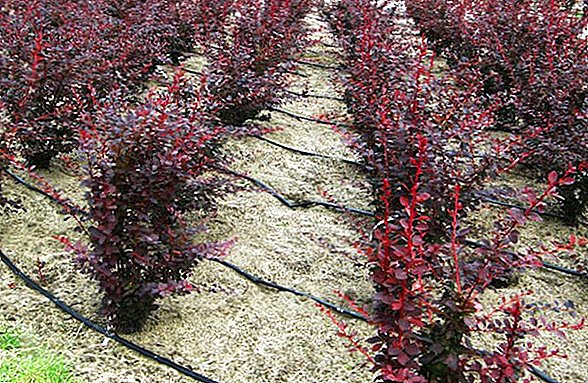
Watering
In dry summer weather, watering should be carried out once a week. For one bush the norm of water is 5-10 liters. After watering, you need to fix the layer of mulch.
Moisture-charged watering (before the onset of winter) should be carried out in the autumn 2-3 weeks before frost. In such a situation, up to 20 liters of water per bush are used.
Top dressing
After planting, fertilizing is not necessary until next spring. The first time an aqueous solution of urea is used. 10 liters of fertilizer are injected into each square meter of the wheel circle. It stimulates the growth of shoots and improves their quality. In the future, nitrogen should be fed no more than once every 4 years.
In the fall, 15 g of superphosphate and 10 g of sulfuric potassium are used to prepare the plant for winter.
Before and after flowering shrubs can be fertilized with organic additives (manure or humus).
Pruning
To maintain the beauty of the shrub requires annual pruning. This stimulates the growth of younger shoots, in which the leaves have a greater decorative character. It is also important for the recovery of the plant.
Pruning reduces the load on the bush and helps prevent the appearance of various diseases.  Sanitary pruning is carried out in the autumn, at least 2 weeks before the first frost. During this period, the plant goes into a state of rest. Depending on the specific climate, this process can be carried out from September to November.
Sanitary pruning is carried out in the autumn, at least 2 weeks before the first frost. During this period, the plant goes into a state of rest. Depending on the specific climate, this process can be carried out from September to November.
In order for pruning to go well, you need to delete:
- old and withered branches;
- areas affected by diseases and pests;
- overlapping shoots;
- crown growing inside.
It is necessary to work with sharp decontaminated garden shears, and large cuts to process a garden solution. All cut parts (especially those affected by diseases and pests) must be disposed of.
Read the rules for choosing a pruner for the garden.
If you want to create a hedge or give a particular shape to the bush, then this kind of pruning should be done regularly:
- the procedure is carried out immediately after flowering bush;
- for 2 years after planting the plant is shortened by 1/2 or 1/3;
- bushes are clipped on the same principle, as long as the crowns of neighboring bushes do not close;
- later on plants are equal to lateral and upper growths.
Wintering
In winter, bushes need to cover, especially in the first few years. This is done like this:
- the layer of mulch increases to 10 cm;
- branches tied up with rope. This should be done carefully so as not to break the shoots;
- bush entirely covered with a burlap cap or other type of covering material;
- the plant is surrounded by spruce branches;
- in the winter, snow is catching up to the bush.
Did you know? Barberry is widely used for the prevention and treatment of various diseases. One of its interesting applications is the fight against anorexia, because the plant is harmless to the human body increases appetite.
Breeding methods
Shrub reproduction is possible in several ways:
- seed growing: planting seeds is held in the fall. For this, seeds are extracted from ripe fruit and placed for a few minutes in a weak solution of potassium permanganate. After that they need to be dried well. In the fall, the seeds are placed in a temporary bed, and in spring you can begin to transplant or thin out (this can be done when several leaves have appeared on the sprout). The distance between plants should be no less than 3-5 cm. As such, they should grow 2 years. After that, they can be transplanted to a permanent place of growth;
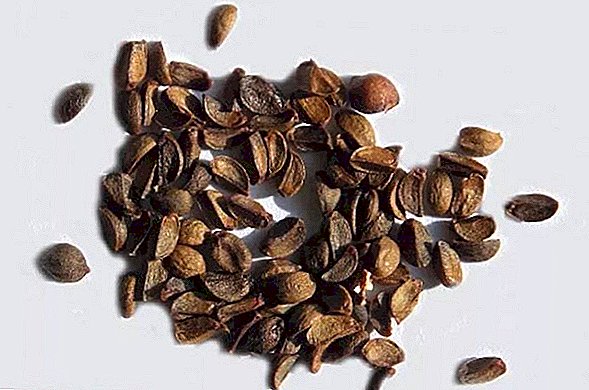 Seeds of barberry Superba
Seeds of barberry Superba - by dividing a bush: held in the spring. The method is suitable for shrubs that have reached 3 years of age. The bush is dug out and divided into 3 equal parts. This should be done carefully by hand using a hacksaw. After which the individual parts are placed in the prepared soil. If the bush is older and has a common trunk, then it is not subject to reproduction in this way;
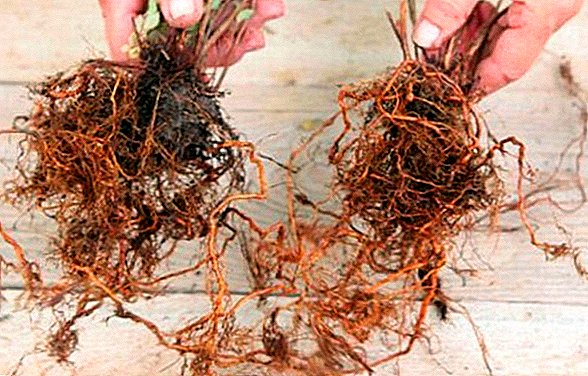
- cuttings: In mid-June, the plant is grafting. This is done in the early morning. From the cut cuttings removed the lower foliage, and the top is cut in half. After which they descend into the water for several hours (if desired, any root-stimulating agent can be diluted in water). Pulling the stalk out of the solution, it must be washed and placed in the soil fertilized with peat or humus with a little sand added. The cuttings are planted in the greenhouse or covered with a special glass or plastic cap;

- layering: In spring, the lower one-year-old shoot is placed in a small depression in the ground and covered with soil. By the fall of it forms a full-fledged new plant.
Perhaps it is difficult to imagine a cottage without berry bushes. Read also about growing raspberries, honeysuckle, Chinese lemongrass, cranberries, actinidia, gooseberries and sea buckthorn.
Diseases and pests
The presence of a large number of volatile production makes the plant very resistant to various diseases and pests. But still there are a number of possible problems.
Pests
Most often the plant is affected by moths and aphids. These insects lay eggs in the fall, which winter well, and in the spring they form larvae and caterpillars.  Moths They damage the leaves, making the shrub not so attractive and worsening its condition. It is necessary to fight with such pests as soon as they are discovered.
Moths They damage the leaves, making the shrub not so attractive and worsening its condition. It is necessary to fight with such pests as soon as they are discovered.
In cases where the damage is not strong, it is necessary to limit washing the bushes. This is done with the help of an ash-soap solution. In order to cook it properly, you will need:
- 400 g of ash pour 5 liters of water;
- boil on low heat for 30-40 minutes;
- after strain the solution;
- add water to make 10 liters of liquid;
- dissolve 50 g of soap in the ready solution.
If the lesion is widespread, then it is necessary to treat it with insecticidal preparations. This can be Bankol, Confidor, Aktellik or Karbofos. It is necessary to use each of them according to the instructions, which are attached to the preparation.
Important! When working with various plant protection products, do not forget to use a respirator and cover all parts of the body with clothes, leaving no loose areas.
As a prophylactic agent for spraying fungicides are used. To hold this event is necessary during the autumn work. 500 g of urea is used per 10 liters of water. With this solution, all shrubs are sprayed to prevent various diseases (especially fungal).
Diseases
The weak point of the barberry are fungal diseases (rust and powdery mildew). These diseases mainly affect the leaves, but sometimes they also touch the shoots themselves.
The main signs of rust are leaf blistering and the formation of a powdery, dark colored scurf. If the coating is light and small drops of liquid form on it, it is powdery mildew. 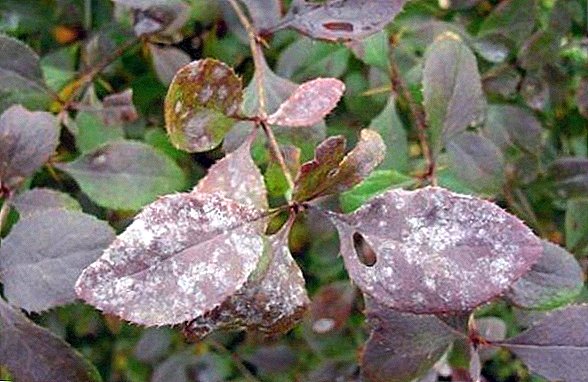 Mealy dew on the leaves of barberry Superba. To combat these lesions, fungicides are used ("Fundazol", "Topaz", "Vectra", colloidal sulfur, copper sulfate, Bordeaux mixture). Apply drugs according to the instructions. On average, a course of 4-6 procedures is required to get rid of diseases.
Mealy dew on the leaves of barberry Superba. To combat these lesions, fungicides are used ("Fundazol", "Topaz", "Vectra", colloidal sulfur, copper sulfate, Bordeaux mixture). Apply drugs according to the instructions. On average, a course of 4-6 procedures is required to get rid of diseases.
If the plant is badly damaged, then sanitary pruning is carried out, and cut off shoots are utilized.
Adhering to simple care, you can grow a barberry, which will delight you with bright foliage, lovely flowers and very beautiful decorative fruits. Such a shrub is a good way to dilute an array of green spaces or create an original hedge.


 Seeds of barberry Superba
Seeds of barberry Superba

